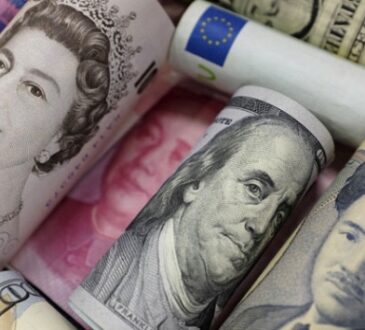
The ECB has cut rates, but with the US Federal Reserve unlikely to follow suit, investors may want to prepare for a weaker euro.
For investors in foreign currency-denominated assets, this could mean improved returns as currency effects boost the overall performance of their investments. In the longer term, improved competitiveness of export goods may also boost shares of Eurozone companies.
“We expect the dollar to remain strong in the face of faster ECB easing and the role of the dollar as a high-yielder,” Deutsche Bank strategists wrote on Friday.
From mid-April to early June, the euro had strengthened slightly against the US dollar, rising to 1.08 from 1.06. Now, however, diverging positions of the Federal Reserve and the ECB will have to be reckoned with. As the Fed is in no hurry to cut rates, monetary policy divergence between the US and Europe is likely to increase.
“The effect of asynchronous cuts by the ECB or BoE would likely lead to a sharp depreciation of the euro or pound against the US dollar and other major currencies,” Morgane Delledonne, head of investment strategy in Europe at Global X, wrote in a note.
“This would be counterproductive for containing inflation in Europe, as it would make imports more expensive, but would certainly improve competitiveness and stimulate exports. In this scenario, European equities could offer investors attractive entry points compared to their US counterparts.”
How Currency Fluctuations Affect Asset Values
If a foreign currency appreciates against the local currency, the effect will be positive for foreign assets. Conversely, if the local currency was to strengthen, this alone would have a negative effect on foreign assets.
For example, the Morningstar US Market Index gained 10.5% since the start of the year in US dollar terms, while the euro version managed to climb as much as 12.4%, thanks to a favourable trend of the dollar appreciating against the euro. Following the same dynamic, the Morningstar Eurozone index has risen 11.5% in euro terms year-to-date, while its US dollar counterpart has risen only 9.6% over the same period.
To take an inverse example where the euro gained against a foreign currency, the Morningstar Japan Index rose 7.9% in euro terms this year, while the yen version of the same benchmark did much better, gaining 16.5% as of writing. That’s because the value of the euro against the Japanese yen increased by almost 10% over the period.
In this case, Japanese investors holding euro-denominated assets benefited from the euro’s strength, while Eurozone investors holding Japanese assets would have been wise to hedge against the exchange rate risk with a suitable instrument.
How to Hedge Against Currency Risk
For those who want to avoid having to think about currency movements, an increasing number of mutual funds and ETFs offer a hedged share class, which aims to neutralise the currency risk on final returns as much as possible.
In the table below are the different performances of three different versions of the Invesco ETF tracking the S&P 500 from 2020 to the present.
In most cases, currency hedging is used by professional investors who have a particular view on the development of a currency or who need to balance their portfolio.
They are also often used by bond investors who want exposure to a particular country’s debt but also want to reduce the currency risk as much as possible. This is particularly the case when investing in emerging market debt, where countries like Argentina and Turkey have suffered currency crises but investors still sought opportunities in their higher-yielding bonds.
Is Currency Hedging Really Worth it?
The primary benefit of hedging is a significant reduction in currency risk. However, hedging is never perfect, and as the table above shows that hedged and foreign-currency performance can deviate. That’s partly because there is always a higher commission to pay.
Most such funds use forward contracts to hedge currency risk. These contracts – which simply lock in a future exchange rate – are subject to the “rolling effect.” Futures contracts must periodically be replaced at maturity, and this generates the “roll yield.” Such yield, which can be positive or negative, is determined by the difference between the price of the rolling near-term expiring contract and the price of the new forward contract with an expiration date further in the future.
Investors should also be mindful of their investing horizon. “Returns attributable to foreign exchange rates can ebb and flow over time and add to an investment’s volatility, but they tend to have a muted impact on long-term rates of return,” explains Daniel Sotiroff, senior manager research analyst at Morningstar. “Meanwhile, the impact of exchange rates on returns can be quite dramatic over short periods of time.”
For most retail investors, the unhedged option usually remains the easiest solution, especially in the case of global funds where there are many underlying currencies potentially moving in different directions.


